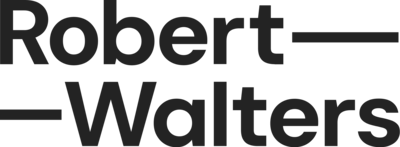RW - foRWard Health & Wellbeing eMag - June 25 - Flipbook - Page 22

Aside from the questions that are still to be answered around the bene昀椀ts that AI can bring
to the work environment, there are much more signi昀椀cant transformational workforce shifts
at play. In December 2024, the CEO of Klarna announced that they would be reducing their
workforce by 50% because they believed AI could 昀椀ll the void that those workers would leave.
Fast forward to May 2025, Klarna are back in the market hiring aggressively and have even
announced to the market that both quality and productivity dropped after that bold strategic
move, so perhaps it was a case of a too much too soon3.
But what does this mean for the future of AI in the workplace, particularly in how
organisations a琀琀ract, assess and onboard talent?
Regardless of industry, every business has this one thing in common: e昀昀ectively adopting AI
in a way that supports their human workforce presents a signi昀椀cant challenge and a very real
opportunity.
AI challenges for organisations
1. Lack of internal AI knowledge & tool adoption
One of the most pressing challenges organisations must face is the lack of internal AI
knowledge. While many companies are eager to integrate AI into their operations, they
often lack the in-house expertise needed to do so e昀昀ectively. This knowledge gap can lead to
misalignment, where AI initiatives are launched without a clear understanding of how
they support broader business goals.
Compounding this issue is employee resistance, often driven by fear of job displacement
or a lack of understanding about AI’s role, which can hinder adoption and integration e昀昀orts.
In turn, this then leads to inconsistent tool adoption rates. While some departments may
quickly embrace AI tools, others lag behind, creating fragmented systems. Even when tools
are adopted, they are frequently underutilised due to insu昀昀icient training, unclear use cases,
or poor integration with existing work昀氀ows.
2. Increased candidate application volume
The increased use of AI in recruitment has also led to a dramatic uptick in candidate
application volumes, presenting a new set of challenges for HR teams. According to Ashby4,
applications per hire have tripled between 2021 and 2024. In Q3 2024, applications per
hire hit 340 indicating that the volume of applications is more than recruiters can handle.
This means organisations need to invest in more resources or a more e昀昀icient hiring process
(potentially using even more AI tools) to handle this increase in application volume. And the
cycle continues.
3. AI bias risks
AI bias presents a signi昀椀cant challenge for organisations, as it can lead to unfair,
discriminatory, or inaccurate outcomes that undermine trust and inclusivity. These biases
often stem from the legacy datasets used to train AI models, which may re昀氀ect historical
inequalities or lack diversity. When deployed in areas like hiring, biased AI systems can
perpetuate stereotypes, exclude quali昀椀ed candidates, or alienate key demographics.
The recent class action lawsuit, Mobley v. Workday, highlights how AI-powered assessment
tools can have a signi昀椀cant impact on candidates. The class action argues that Workday’s
AI-based applicant recommendation system discriminates against applicants based on age,
race, and disability 5. A primary concern here is that the judge didn’t consider whether that
discrimination was intentional or not, merely that it existed and therefore there was a case
to be considered. All organisations using large screening platforms need to ensure that they
are fully educated about the datasets in use and con昀椀dent that they will not lead
to discrimination, intentional or otherwise.
To mitigate the risks of AI bias, it’s essential that human oversight remains central. People
should always have the 昀椀nal say in critical decisions. Human judgment brings context,
empathy, and ethical reasoning that AI cannot replicate, ensuring that technology serves as
a tool for empowerment rather than exclusion.